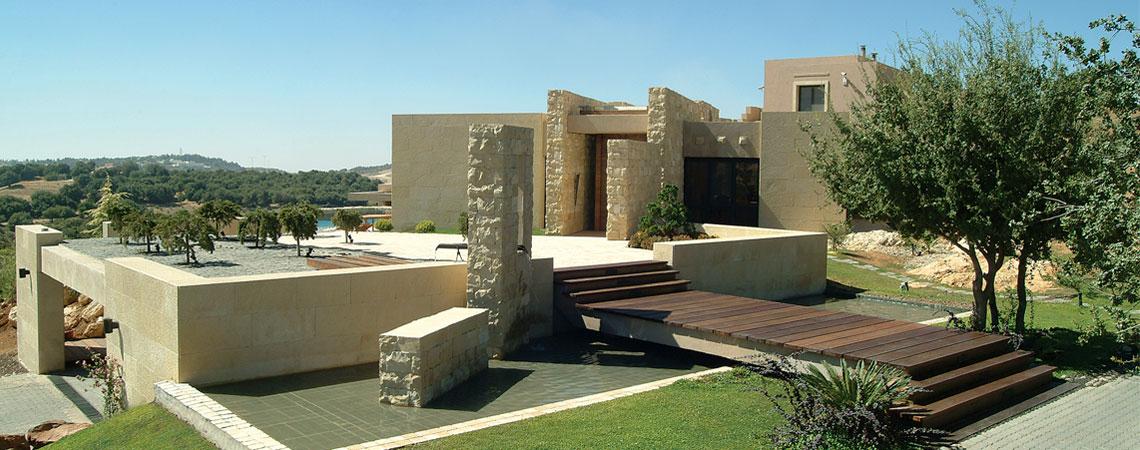
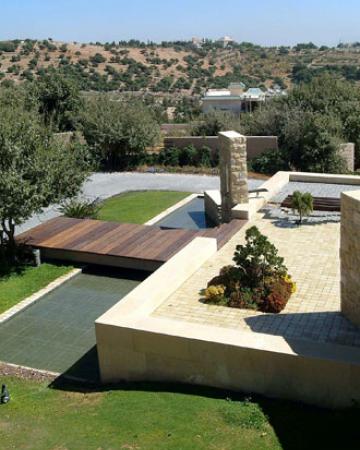
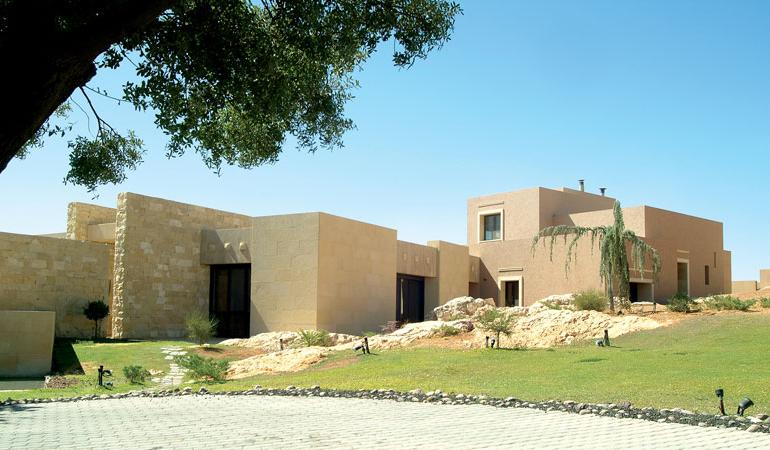
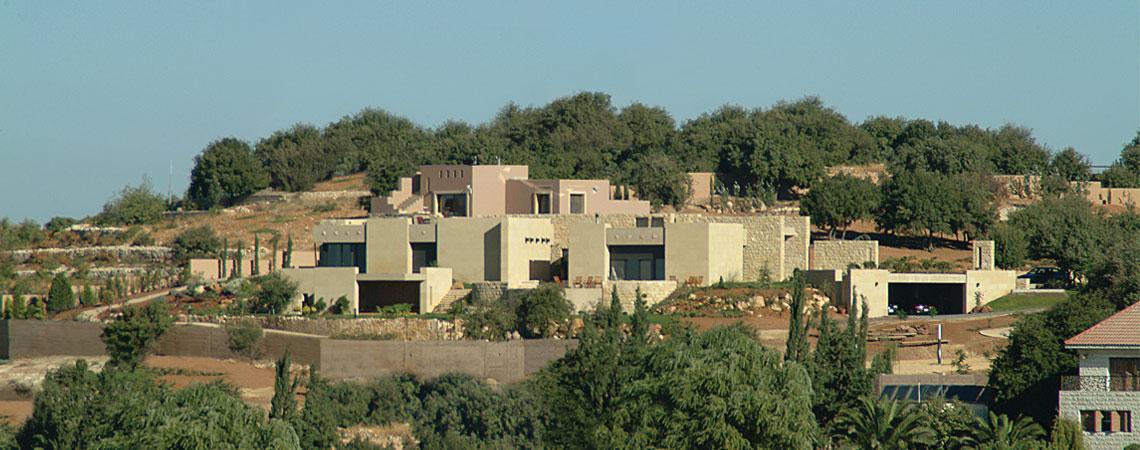
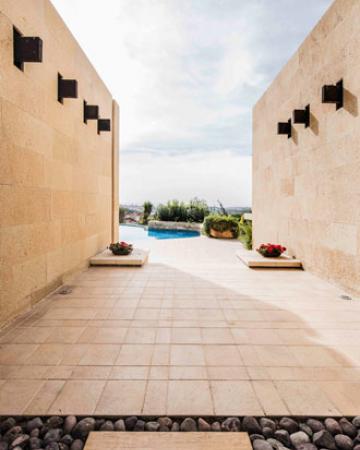
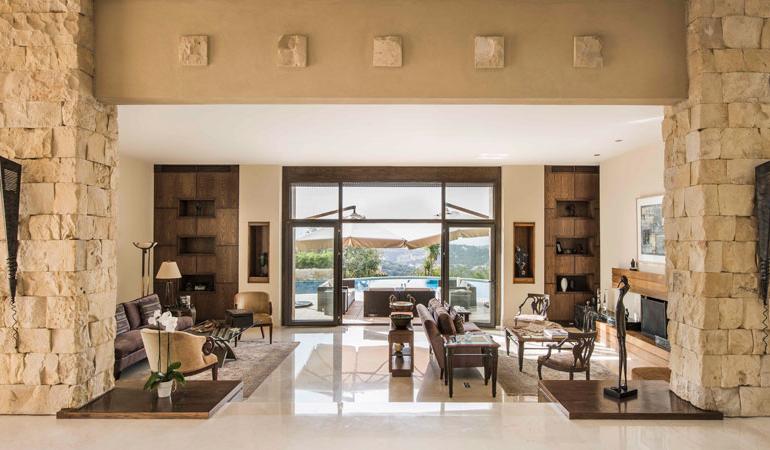
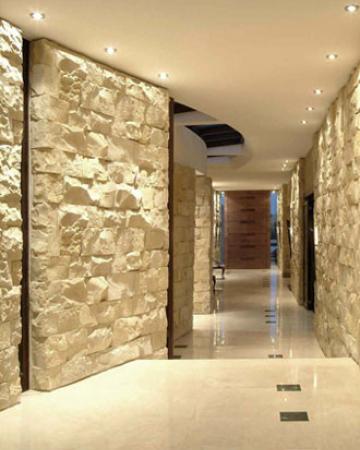
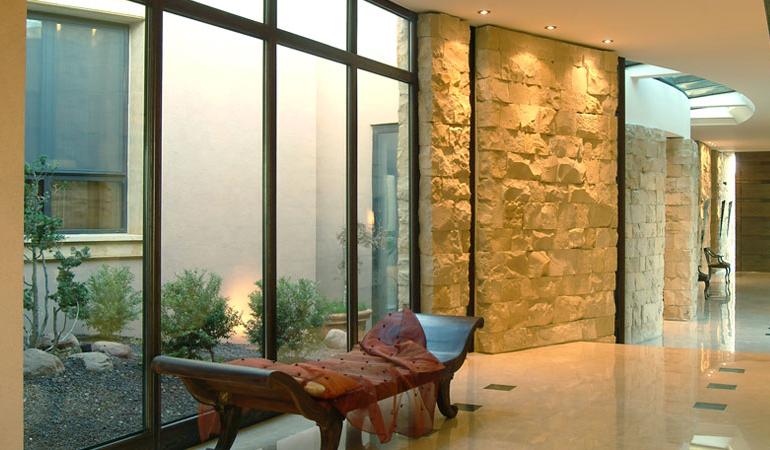
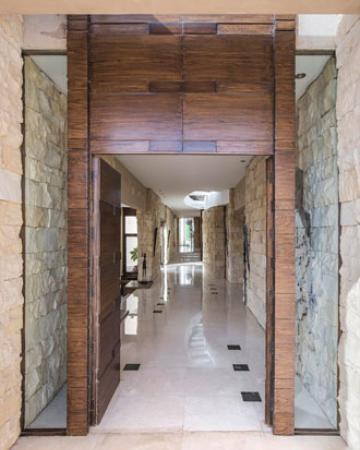

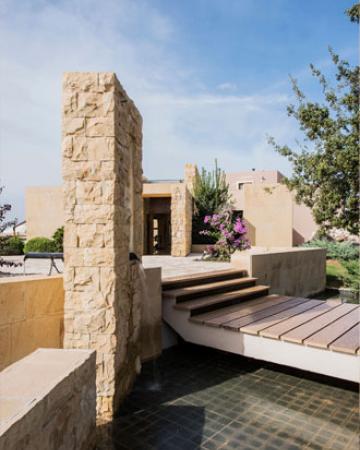

Nestled on 7,000 m² of magnificent hillside in a prestigious location in Fuheis – West of Amman, Jordan, with a broad vista directed towards Jerusalem, the architects’ house captures and portrays an ancient story of time. The design draws from the blend of a modern form interpreting the mystical Arabian Culture. The house represents a new form of architecture in Jordan; the design is integrated with the landscape, and is layered horizontally and vertically through a man-made path, with contrasts between solids and voids: the glass and the stone. It incorporates a wealth of architectural knowledge, but at the same time expresses the individuality of the architects’ aspirations: it is designed for her by her.
This House; which has won the Best Architecture at the Arabian Property Awards in 2010, is designed for the architect herself and her family, and comes at a turning point in her life and career; a time of personal and spiritual reflection. The simple yet sophisticated design is based on a succession of complexities and contradictions through an intricate juxtaposition of indoor/outdoor and public/private series of spatial progressions. It transpires from the architect’s ‘journey of life’, her ambitions, achievements, successes and her continuing long and prosperous path ahead, it is designed with her family in its core and their happiness as the core of the architectural direction.
The composition was intuitive and free-spirited, and symbolized birth; ephemeral existence; and the life beyond and was translated into a sequential spatial arrangement that started with an entrance/podium with commanding views of the picturesque terrain (a gift of uninterrupted views to the visitors and friends) and climaxed with an olive tree “tree of life” and a view of Jerusalem in the distance.
The house is contemporary in its composition; yet; rooted in local identity through its symbolic embracing of the village concept forming a series of spaces clustered around this spiritual ‘journey of life.’ This main spatial and planning element of the House is a 30-meter-long corridor that extends along its length and entertains its different dining, living, and other spaces. The House contextualizes the setting in its reintroduction of surface, ground, and ceiling. Surfaces are liberated to create roofs that are used as spaces of “dwelling” and walls that reintroduce the notion of open space of modernity while sustaining local values of privacy and seclusion.
This context-minded scheme, through its harmonious integration with the surrounding terrain and foliage and incorporation of both local stone-sheathed and plastered surfaces culminates in a weightless form; yet, with a silent presence. The House is definitely considered a paradigm shift in contemporary house design in Jordan that is not only challenging existing norms but rather re-inventing spatial organizations intertwined with the use of technology and the use of natural light.


